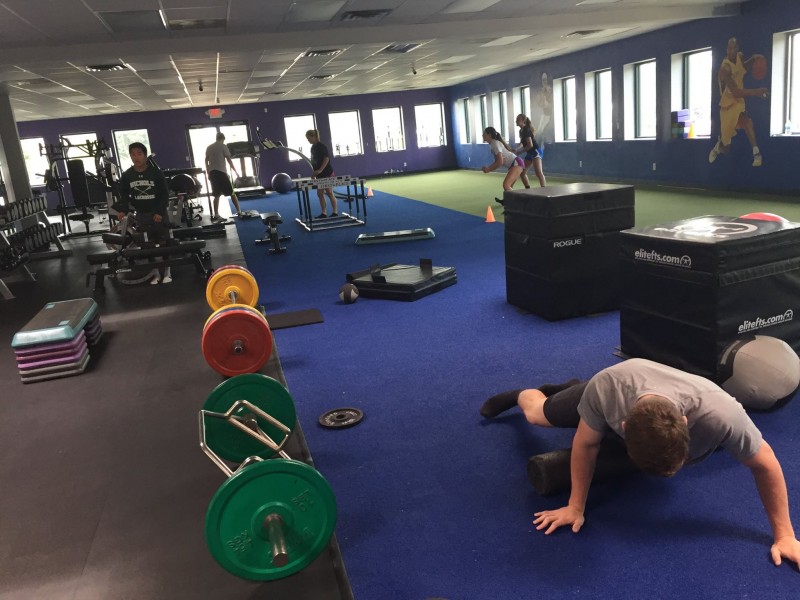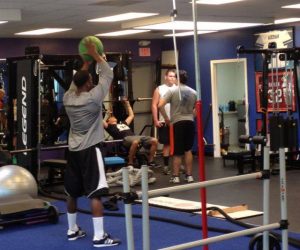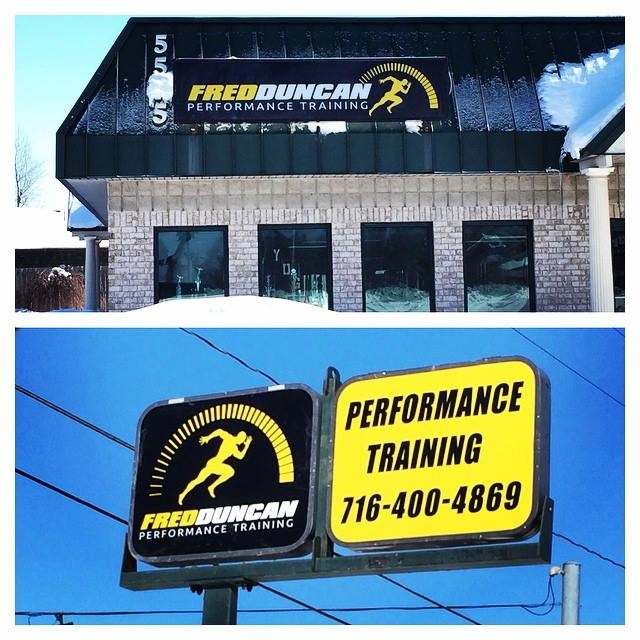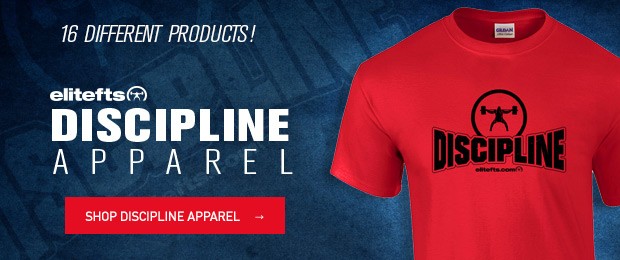
I have been on a bit of a writing hiatus the last few years here at elitefts.com. I did finally release my Intermittent Fasting work as a multiple-part series on my website and have put out some other content here and there. Just remember, though: for every 100 gurus writing 12 articles a week, there are actually really skilled coaches out there getting real people real results. Check it out some day.
I’ve spent the better part of these last two years working with hundreds of new clients and continuing to meet and learn from seasoned coaches, assisting in training camp with the Arizona Cardinals last year being one of the highlights. They have a tremendous all-around staff, from physical preparation to physical therapists, and a clear vision on the continued rise of sports science and analytics.
MORE: Strategies of Business and Training: Save, Spend, Invest
I’ve also been fortunate to shadow and consult with some really intelligent physical therapists, each of whom I respect. There is quite a large market in helping people feel and move better, so having knowledge in this department doesn’t hurt. If there is someone nearby who is really good at what they do, I’m doing a disservice to my clients if I do not branch out and learn from them. Lastly, every client is a learning experience and I make sure I study what went right and what went wrong as I continue to develop my system.
Below I’ve compiled some of the many lessons I’ve learned these last few years in training, nutrition, and business.
Training
1. Recovery and Restoration
Recovery is one of the most underutilized forms of “training” in the development of athletes/lifters today. Training is stress and your response to stressors are highly individual. This can have a tremendous effect on the central nervous system — both positive and negative.
Understanding how this affects recovery and adaptation is crucial in developing an optimal training program. If you neglect your ability to recover and continue to blast the central nervous system with high-intensity efforts, the body will never achieve super-compensation, as it will be too concerned with maintaining homeostasis. In plain English, your body will be too focused on trying to recover from its last beating that it won’t be able to catch up and positively adapt.
As an example, this summer I was working an insane amount of hours and eating in a caloric deficit. My workouts sucked, obviously. I switched to every-other-day training with low-intensity walking on the off days and I haven’t looked back since. My strength, energy, mood, and recovery have all improved.
Recovery Tools: Tempo work (a la Charlie Francis), walking, bodybuilding/hypertrophy (submaximal) training, concentric-only sled work, mobility circuits, some form of soft-tissue work, and (most importantly) SLEEP.
2. More isn’t always better.
Three biggest issues I see coming from a lot of colleges (and some pro) strength and conditioning programs is volume of work, intensity, and lack of understanding of bioenergetics or demands of the sport. Every summer I get high-level collegiate athletes that set all-time PRs and feel the best they’ve ever felt from significantly less volume and max effort work than they’re used to. Of course, there are many ways to achieve the same goal, but remember that the common denominator of all great athletes is movement, not necessarily strength.
My advice: Spend less time writing your fancy program and more time watching your athletes move and perform. I’d also recommend both Buddy and Ryan William's Football Manual and James Smith's High/Low approach be mandatory reading for all coaches.
3. In-Season Training
In my opinion, this is the most mishandled aspect of training today.
“You are either developing, maintaining or recovering” — Buddy Morris.
Continually trying to develop in-season is a recipe for disaster. This is where the importance of load management comes into play. It doesn’t matter how strong you are if you aren’t on the field or aren’t recovered enough to perform on the field.
Here’s something to consider from the BJSM article, How much is too much? Part 1 International Olympic committee consensus statement on load in sport and risk of injury (2016):
"Though injury etiology in sports is multifactorial and involves extrinsic and intrinsic factors, evidence has emerged that load management is a major risk for injury…insufficient respect of balance between loading and recovery can lead to prolonged fatigue and an increased risk of injury and illness.” [1]
Nutrition
4. Stop reading, start doing.
For the average lifter, the more you try to read/learn about how to diet, the worse off you are. The knowledge you are seeking is generally not what’s holding you back; you are. Do you understand how many physiques in the 50s, 60s, 70s were better than yours? And they never had access to a single article, exercise science class, or bullshit eBook. Once you understand some common sense building blocks like caloric surplus vs. deficit and the importance of things like protein, healthy fats, fiber, etc., then you are ready to log off Facebook and get to work.
5. Less Protein and Fewer Meals
In my younger and dumber years I went through periods where I had upwards of 400g of protein per day and ate no less than eight times. It was at this point that I was at my heaviest weight, body fat, blood glucose, and cholesterol level. I also had little time for much else. I’ve never had less protein (.7-.8g per pound of bodyweight) or fewer meals (one to three) and I feel the best I ever have (training, body composition, blood markers, and recovery wise). Unless you are in a caloric deficit, you don’t need to go past one gram per pound of bodyweight.
6. The War on Grains
I know that voodoo nutrition is really popular and things like the ketogenic and paleo diet have launched a war on grains, but I assure you it’s not what you’re led to believe. Let me break down the logic that fear mongering grain-haters are using:
Sugar = Carbs
Carbs = Bad
Grains = Carbs
Grains = Death
Before you demonize a certain food, you need to take it into context and remember that whole “dose-response” thing you learned in school. The amount, frequency, intended effect, effect, and type must be accounted for. Someone with normal glycemic control who eats within their calorie/macro goals has no need to completely cut out whole grains or carbohydrates in their diet — especially if they lift. As a matter of fact, there is a fair amount of research that would support a moderate consumption of whole grains being beneficial for health [2,3].
Business
7. Making Money in the Industry
There are a few ways to make money in this field today. You can fad-hop and jump on every new thing that pops up so you can ride the wave. There will always be a market for these types of businesses and products, as the American consumer loves novelty and gets sick of things quick. These are temporary, however, so be prepared to have to change things often.
You can market nonsense online and play on people's hopes and fears by showing off your six pack while warning how certain foods will kill you. Or, if you’re a really good bullshitter, you can look like shit and still somehow sell your magic coffee or workout. Or, you can continue to learn and focus on producing results for real world clients. Sadly, there is more short-term money in the fad market. But for longevity, I’d stick with maintaining your pride.
8. Location
First, understand that this is my opinion and I’m not saying there aren’t other important factors. There are generally two schools of thought/clichés here:
- “If you’re good, you’re good, so just find a cheap rent.”
- “Location, location, location.”
While I agree that if you are good you should always be able to at least get by, I think location is every bit as important. If nobody knows you’re there, how will they know if you’re any good?
RELATED: An Introduction to Affinity Marketing — F Your Funnel
What is the one thing that every single person wants more of? Time. Time is everything. If it wasn’t, you wouldn’t have fits of road rage, smack your computer for running slow, or use a meal prep service to make all your food. Is your location convenient for your target population? While you will certainly get some people that will travel as far as they need to go, you aren’t exactly a surgeon, and this isn’t life or death.
We picked ours based off its proximity to multiple neighborhoods and four relatively large high schools. While the majority of clients are referrals, I can’t tell you how many people initially came due to the convenient and close location.
In closing, I am hoping to start putting out a little more content the next few months. I’ll continue to cover all three of these topics and any others that the readers find interesting. Stay hungry.
References
- How Much is too much? Part 1 International Olympic committee consensus statement on load in sport and risk of injury (2016). http://bjsm.bmj.com/content/50/17/1030.full?trendmd-shared=0
- Whole-grain intake and total, cardiovascular, and cancer mortality: a systemic review and meta-analysis of prospective studies. (2016). http://www.ncbi.nlm.nih.gov/pubmed/27225432
- Greater whole-grain intake is associated with lower risk of type 2 diabetes, cardiovascular disease, and weight gain. (2012). http://www.ncbi.nlm.nih.gov/pubmed/22649266















1 Comment